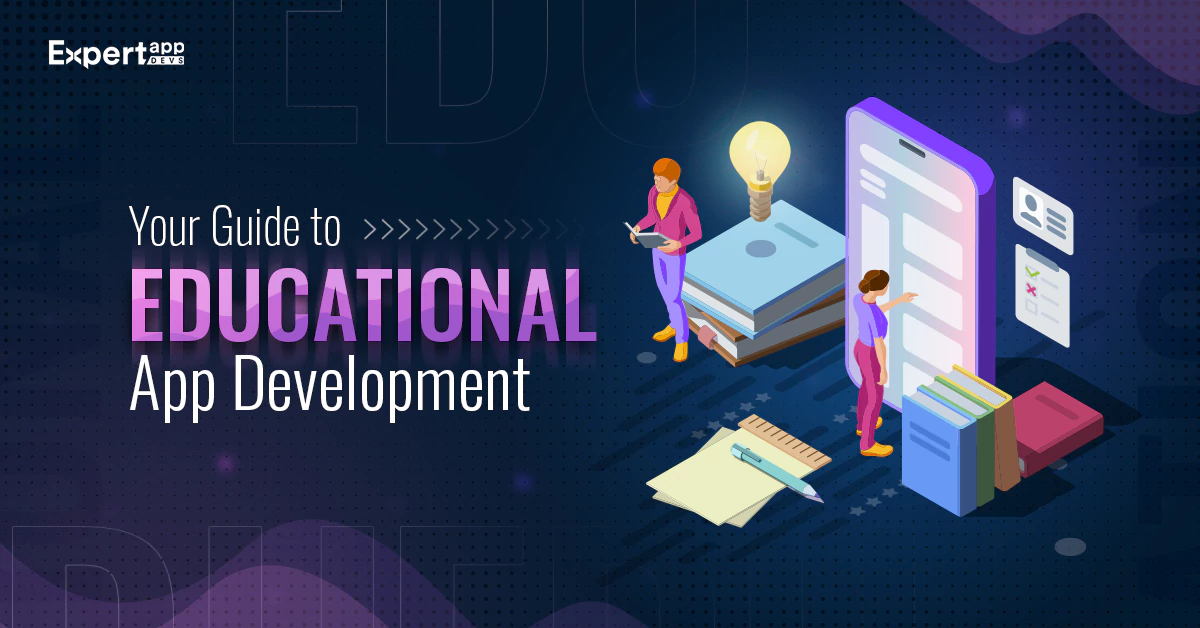Educational App Development - Step By Step Guide
The education industry has evolved in the past decade. Inclusive learning flipped classrooms, and blended learning have gained importance. While the blackboard remains a prominent part of classroom education, learning has moved beyond closed spaces.
Students are seeking immersive and practical experiences. Activity-based, exploratory and project-led learning are a few solutions that have gained importance. Students and teachers seek new and immersive experiences within the classrooms.
It is not just about learning anymore. There are different parts of the education system, including the administration and training, that have gained virtual support.
You must invest in digital solutions to ensure smooth operations, streamlined flow, and holistic learning. The ed-tech market size is worth $74.2 billion. It is said to reach $288.4 billion by 2031 (FutureMarketInsights). This is the right time to invest in an excellent mobile app solution to enhance educational outcomes.
We have curated the top steps if you are planning a custom eLearning solution or an education app development. These steps will help you release a quality and highly innovative solution that will limit the gaps in the industry.
Need for Educational App Development
There are several reasons educational applications can help end users. We have listed a few reasons to create elearning mobile app solutions with apt learning content.
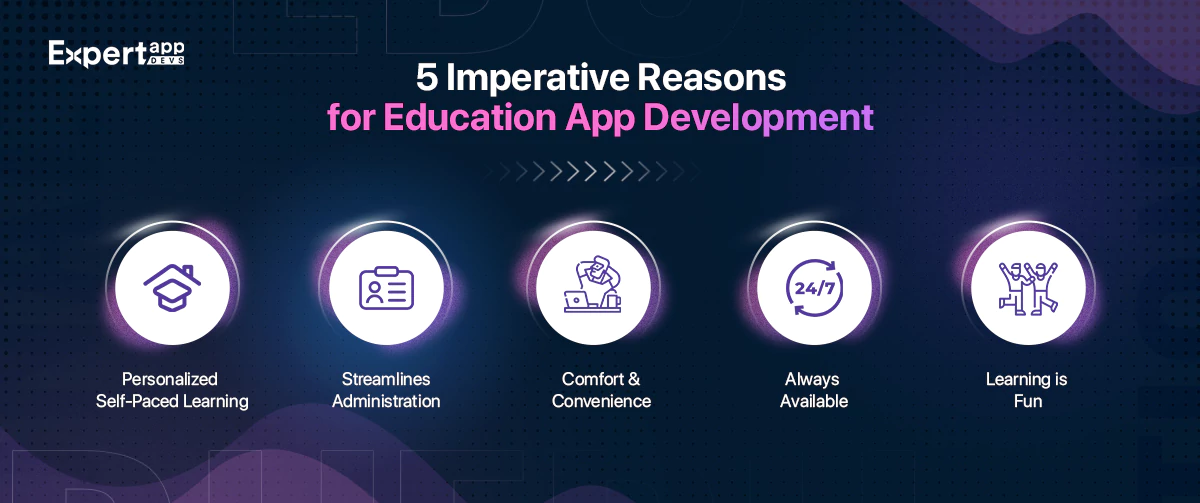
#1 Personalized Self-Paced Learning
Mobile applications allow students to access courses that they need to learn. They offer self-paced videos and live classes to help students overcome learning challenges. This can help them strengthen concepts, meet mentors outside their school, and get personalized guidance.
#2 Streamlines Administration
Schools have to manage admin-related tasks. This could include communicating with the parents, telling them about the classes and others. The app will help them manage all these tasks. It will streamline the information updates and sharing for better communication.
#3 Comfort and Convenience
Whether it is managing different management tasks or helping students learn, you get a lot of convenience with educational mobile apps. It allows you to access the data, change the details and complete the learning from anywhere. You can choose from the different types of education apps, the one that fits your needs.
#4 Always Available
The data is always available and accessible. You can access the lectures, connect with the mentors, and download the plans anytime. The support system and the bots are ready to respond to your queries.
#5 Learning is Fun
When you create a mobile app to extend learning solutions, you can make it fun and engaging. The kids get a lot of practice done. It is almost akin to playing a game and is full of challenges. This way, the child learns a lot more than usual.
10-Step Guide to Building an Educational Application
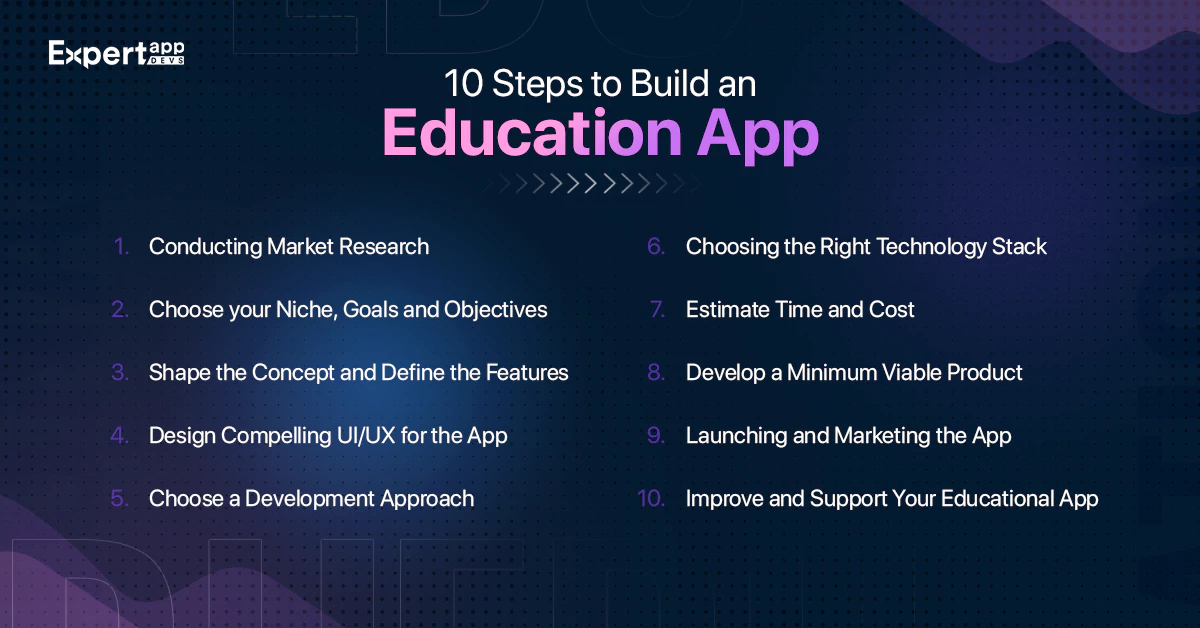
Step#1: Conducting Market Research
The educational niche is vast. There are too many segments, elements and niches that are slowly segmenting the industry. At the same time, with the growth of EdTech, more players have entered the domain. This has led to increasing competition in this industry.
If you want to build a mobile application, you cannot proceed without
- knowing the industry
- understanding the existing players
- identifying the customers
It is very important to determine the gaps in the industry before you begin working on the idea. Market research will also help you analyze the competition and how they are faring in this domain.
You can determine what type of application the competition has developed. Understand how this app is attracting users and conversions. Know what makes the application tick in the market.
It will become easier to close on the idea when you are clear about all of this. It will also help you prepare a defined roadmap for app development.
Step#2: Choose your Niche, Goals and Objectives
You have defined the gaps and problem areas after the research. This will help you decide on the niche for your business application.
For instance, you could go into K-12 educational courses. If you don't want to offer courses, you could build a school management system that caters to the needs of the parents and teachers.
You can also create a game-led educational application. There are several niches, and each of them has significant issues.
Once you have defined the niche, you must determine the goals for your educational application. What do you aim to achieve with the application? Do you want to streamline the existing processes in your institution? Would you like to give mentorship solutions to your students?
The goals and ultimate objectives will help you plan the app's functionality and features. It will give your app the much-needed strategy and plan.
Step#3: Shape the Concept and Define the Features
Once you are completely sure of the niche, the users and the goals, you must work on delivering the concept for the mobile application.
You are aware of the problems your user is facing. Your concept/idea will help lay the foundation for the mobile app. It will be considered the building block for the software solution.
The concept could be as simple as an app-based learning management solution or an application to help kids learn a particular subject.
Once the outline is ready, let's fill in the application with some colours. You must think through the features that you want to offer the user.
The problem statement that you drafted earlier will help you plan the features. For instance, if users want to send out notes regularly to the parents, it should be included in the feature list. If the admin wants to manage the staff attendance, this is a must-include feature for your educational application.
The problem statements will dole out maximum features. It would help you further the Educational mobile app Development with the right approach.
Step#4: Design Compelling UI/UX for the App
The user is the protagonist of your mobile app world. They are responsible for maximizing the conversions, increasing the references and building the profits for your business.
Your user should be at the core of your development plan. You must create the design experiences for the user. It should make them want to download the application and increase conversions.
The experience-led design would include adding the buttons and texts in legible places. You can identify the areas that are way too stretched. At the same time, you would be aware of the safe zones for using the application.
After creating the user experience design, you must work on the user interface. Delivering a smooth and intuitive interface is essential to maximize conversions. Educational apps will be used by all age groups. It is important to ensure it is usable, carries a pre-learnt curve and offers smooth movements.
Step#5: Choose a Development Approach
How do you plan to develop your educational mobile application? Do you want to take the native educational app development approach? Would you like to build for multiple platforms simultaneously?
The development approach is pivotal in ensuring you can reach a chunk of your target audience. We suggest you opt for cross-platform development if you have many users across platforms.
If you are unsure where the maximum users are, the cross-platform approach can help determine your user base.
You know the user base once you have created the basic app and seen many downloads. You can determine which device or OS your user uses. This would help you plan the application development approach and further your solution.
Step#6: Choosing the Right Technology Stack
The tech stack is equally important in building the application. For example, if you build using the cross-platform approach, you must know which framework will work best. Do you want to go with React Native or Flutter?
In case you plan for native app development- choose the operating system. When you choose iOS, you must choose the programming language, backend tool, IDE and code editor to build your application.
You must perform similar tasks when developing an Android application for your business. The most popular tech stack for education app development is the MEAN stack. Many businesses also use Google Cloud to help develop and collaborate.
Step#7: Estimate Time and Cost
When building the education software solution, you must ensure you are clear about the milestone goals for the development. You could plan the simple app within a month and an advanced solution within 9 months.
However, there are several factors that you must consider, including the cost, resources required and the features you plan to include in the advanced app.
Once you have the tech stack, the features and other important information, you must start working on time and development costs. This would help plan the ideal budget for development.
You would also have a rough timeframe on when to expect the application. It can help enhance internal experiences and stay focused.
Step#8: Develop a Minimum Viable Product (MVP)
This is a very crucial step. It will decide if your app will be downloaded and give the future roadmap for the solution. The minimum viable product is the key to building an advanced application. When your idea is accepted, you can embrace profits.
The MVP will let you know if people are ready to accept the application and streamline the solutions. There are three crucial steps involved in MVP development.
Integrating Content and Learning Materials
The first step is to build the design, develop the logical code and integrate the database. You must add as much content and learning solutions as you want to this basic application. When you create a full-fledged solution, users will know what you are offering.
This would help them identify with your application. The content on the application will decide whether your user will convert.
Implementing User Feedback and Iterating
The second step is to listen to the users. It would help if you continuously listened to what they had to say. Consider their feedback as important and incorporate it into your website. You will see continuous improvement in your application.
The users will help upgrade your application. They will help add the necessary features to uplift the app and scale it positively.
Ensuring App Security and Privacy
The last step is to enhance the security of the application. You must ensure proper encryption and robust security of your application.
The application's security is critical as students and parents would be sharing a lot of information. If you are a study application, the students would be continuously logged into the application.
That's why security is an important consideration for your application. Make sure to test the application for security and content before launching.
Step#9: Launching and Marketing the App
This is the pre-final step for your educational app development. Before you launch into this step, you must have tested the application thoroughly, conduct unit tests, system integration tests and others before launching.
Once you have tested the app, optimize it for the app store with the right strategies. It is now important for users to discover the application.
That's where your app marketing team will surface. You must have prepared the app marketing strategy. Let's put it to work at this point to build a strong user base.
Step#10: Improve and Support Your Educational App
Once you have launched the application, you await your users' hearing. You want to know what they have to say about your application. Do they love your app? Would they love some extra features? Do they have pricing issues?
Once you have enough feedback, improve the application to make it more user-centric.
The last step also includes offering continuous support and maintenance to upkeep the application.
4 Crucial Factors to Consider for Mobile App Development
Here are the top three factors you must consider before building an application for online education.
#1 The Target Audience
Who is the user of your application? Is it a toddler, their parent or a bigger child? The target audience will help determine the look and feel of the product. They will be responsible for planning the interface, aesthetics and functionality.
You must have a fascinating and engaging interface to cater to a young audience. It should have a cartoon theme or be game-based.
However, if you are talking to a parent or someone who is a professional, you must look and appear their age.
#2 The Decision Maker
While the user will determine the app's appearance, the decision maker will decide the marketing strategy. If you want to earn the maximum from your application, you must consider the decision maker for your application.
If it is the parent, the marketing communication should be directed toward them. You must take a more mature approach. However, if your kids are the decision-makers, you must direct the communication toward them.
#3 App Security
You cannot let go of this one. You must know what kind of security your business needs. If you need high-level security with reduced vulnerabilities, you must work on the security accordingly.
Think through aspects like role-based access and encryption to build the security system for your software solution.
#4 LMS - Learning Management System
You must consider including the learning management system for the educational application. This will help you design the application well, especially if you plan to include numerous courses.
Using the LMS, you can deliver online courses, monitor the progress and attain feedback immediately. It is important to customize the LMS to create an educational app suited to your needs.
Top 5 Educational Applications of All Time
#1 Canva for Education
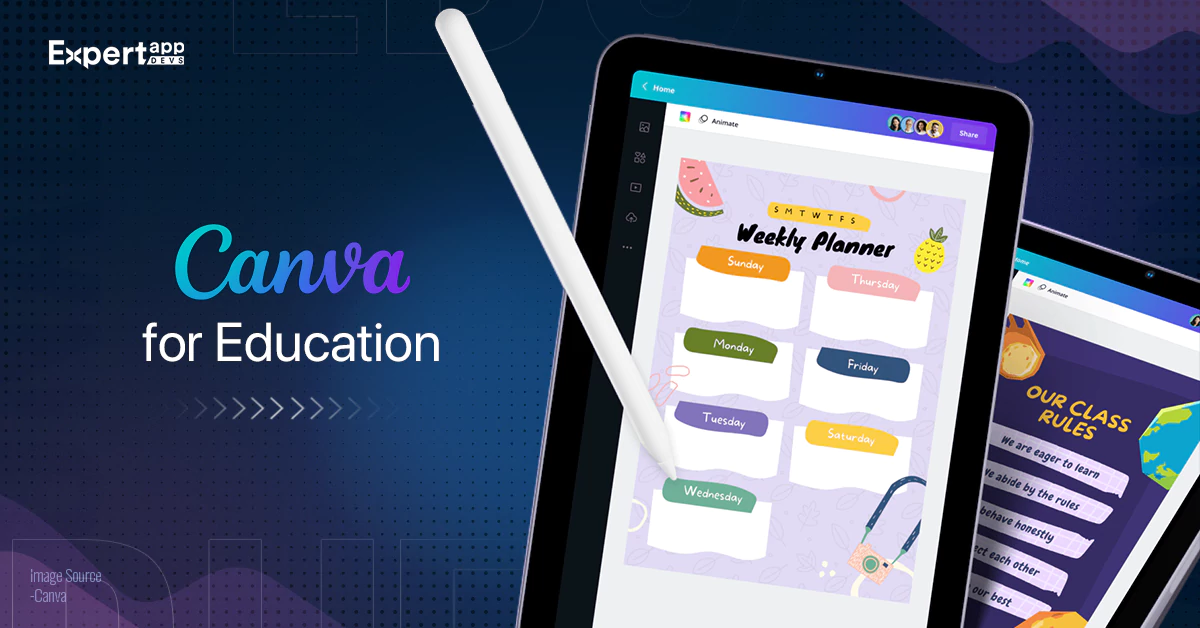
This is an application for the teachers. It will help them create engaging classroom content for a better learning environment.
With this Canva for Education tool, the teachers can draw illustrations, create beautiful PPTs, and even translate an idea into images. It is an increasingly engaging application that makes classroom learning fun and engaging.
#2 MentalUP
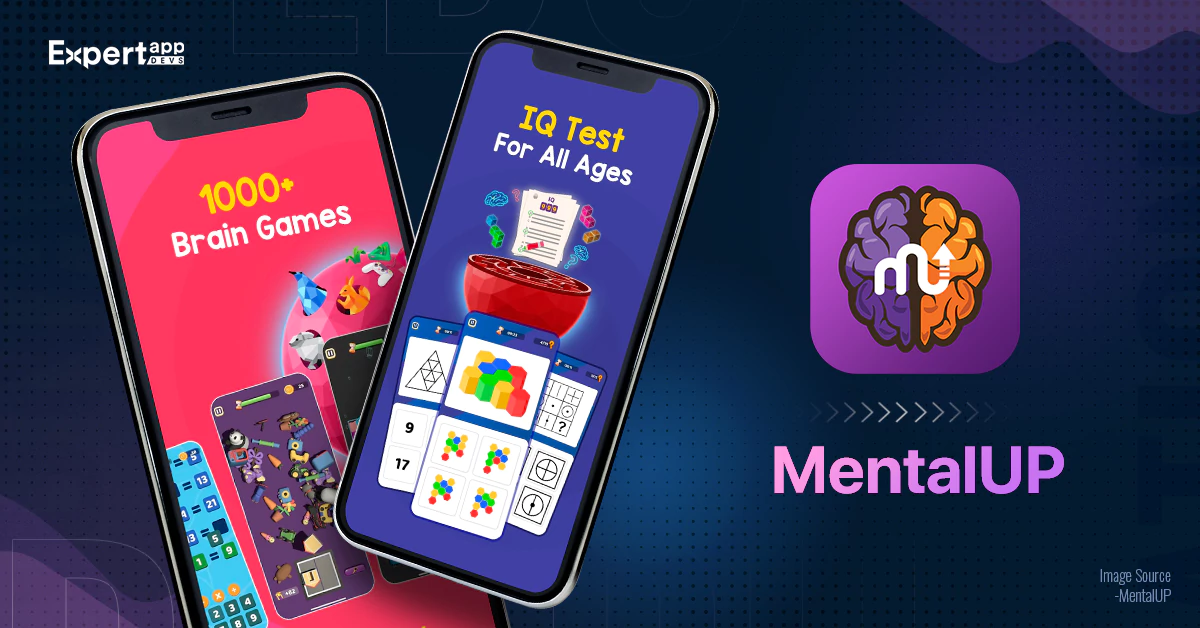
This is a gamified educational application that allows users to take quizzes and learn from them. As kids learn faster with games, you can translate their screen time into something more meaningful.
Allow them to play games and improve their learning from these. It is an excellent opportunity for parents and schools.
#3 Duolingo
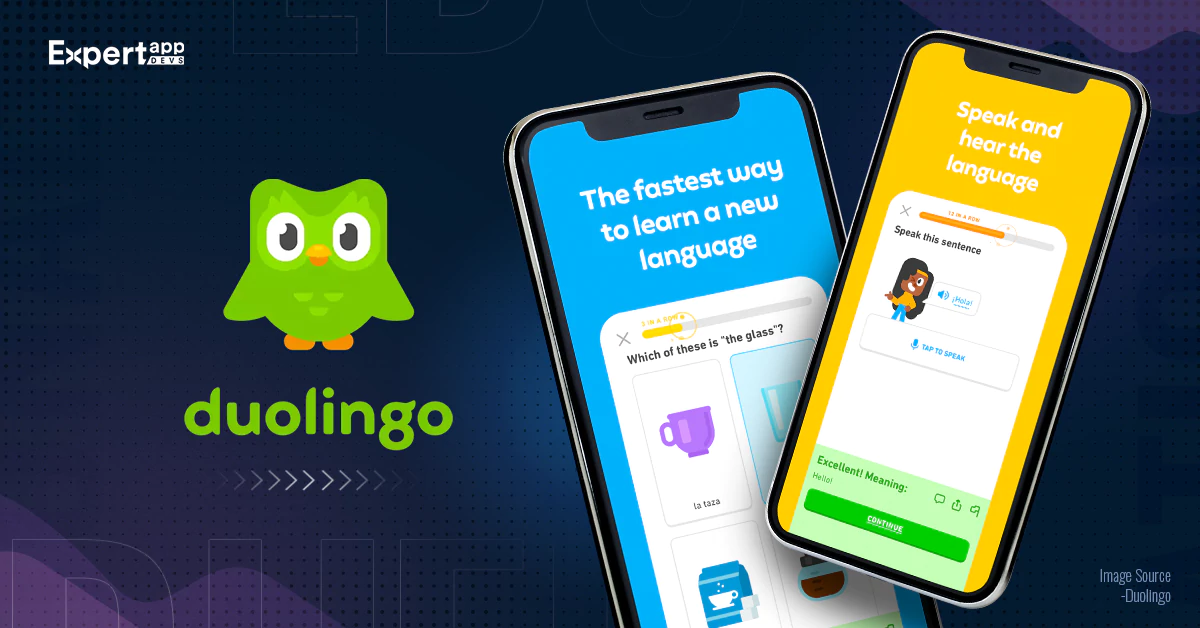
This is an excellent language-learning application. It has added a lot of languages to its base. You will notice that this application will help the kids engage in learning the languages.
It takes kids and adults through the basics of languages and is a pretty interactive application. There are several other language-learning apps as well in the market.
#4 Khan Academy Kids
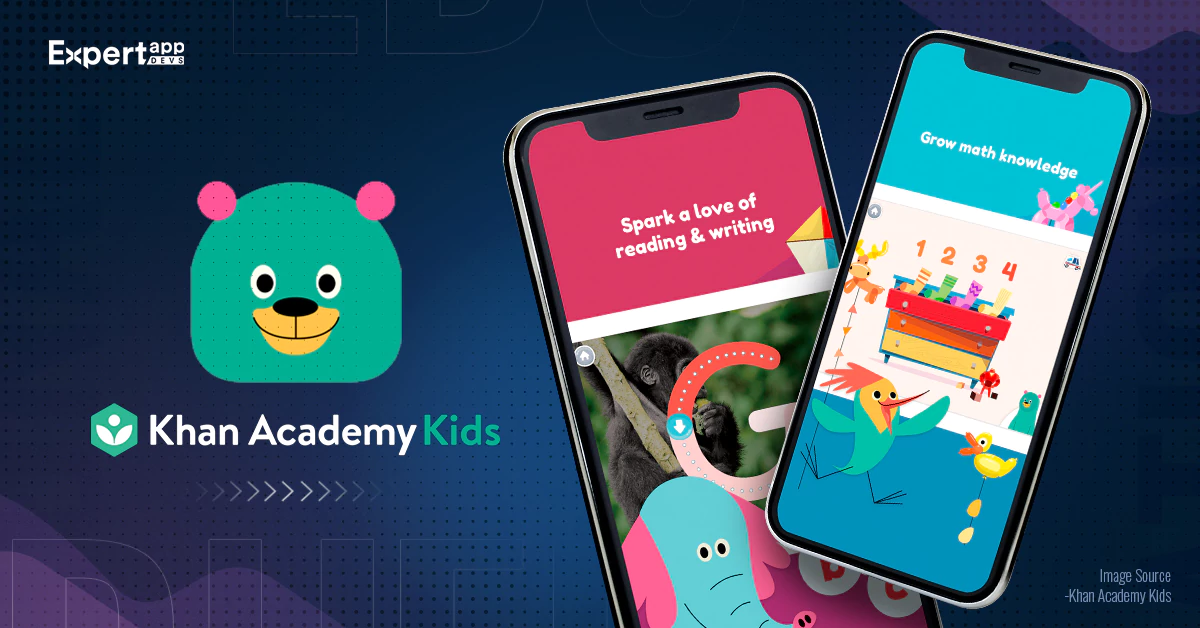
This is an excellent preschool application that allows preschoolers to learn the concepts. It takes the parent-led education path. The parents can help the kids learn the preschool concepts using excellent examples.
The games and activities will completely drive the concept into their brains.
#5 ModMath
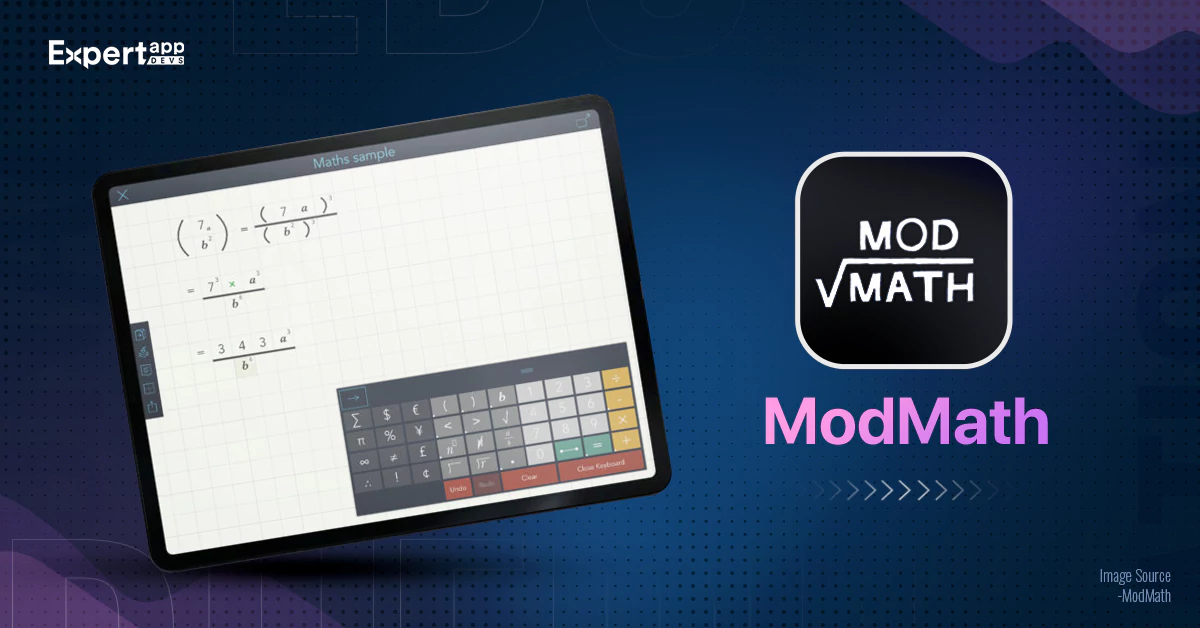
It is important to make Maths fun and engaging.ModMath is working on this aspect. It can help grasp the concepts using applications and real-world examples. It is yet another interactive application that furthers Math conceptual learning.
Conclusion
Building an education app is gaining popularity. It is one of the few industries that is investing in technology to streamline processes and extend experiences. Several companies are creating app solutions for diverse purposes. There are learning apps to make education fun, enhance teacher training, and aid the school admin.
Expert App Devs can actively deliver capable educational app solutions for your requirements. We have a defined process that allows us to translate your ideas into mobile applications. Schedule a call with the most trusted education app development company in India.
Read More: Metaverse in education
 Jignen Pandya
Jignen Pandya
